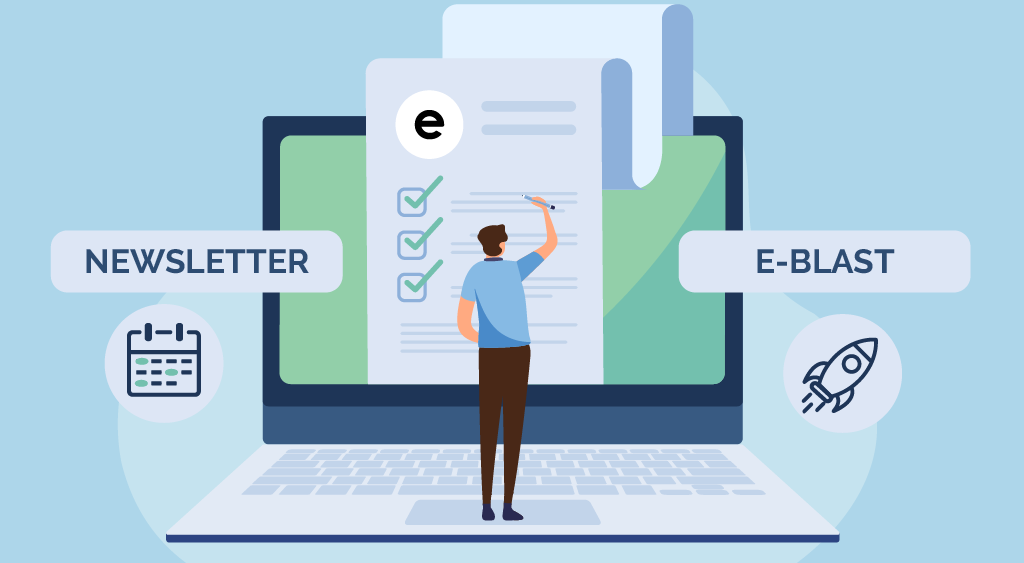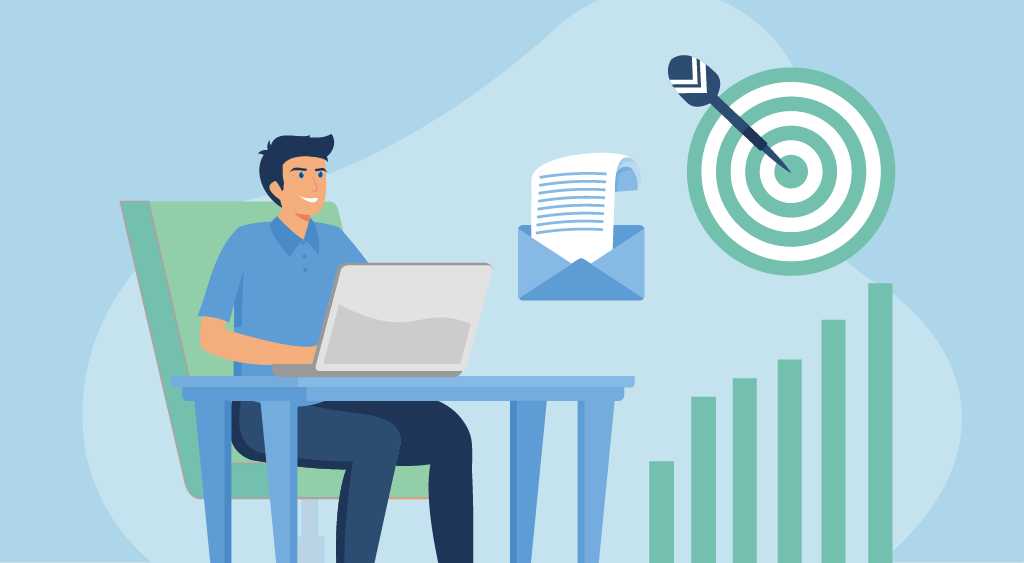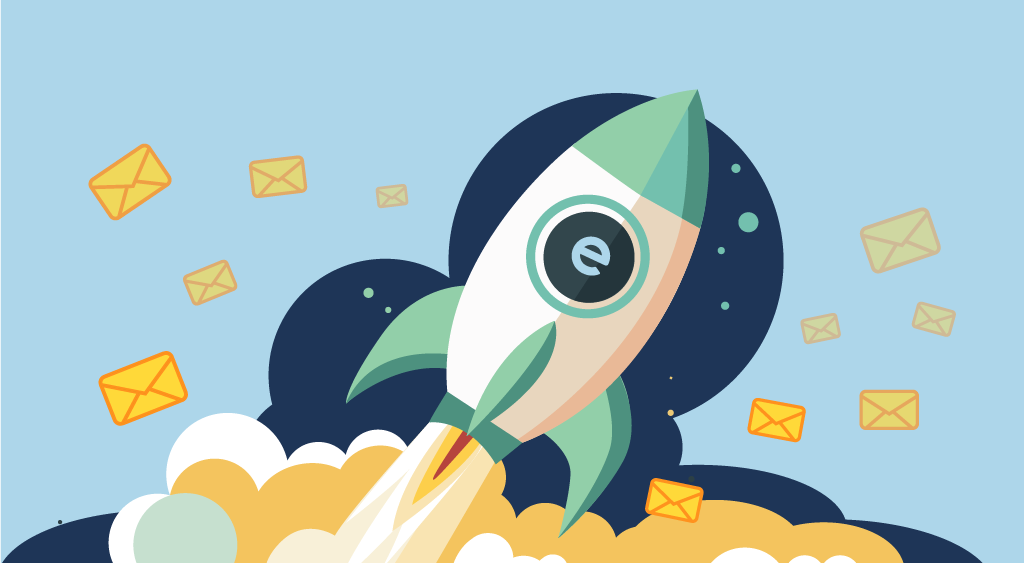E-blasts are familiar marketing tools that still deliver good results, though they inspire more debate than you’d think.
For some communicators, the word eblast is a simple short-hand that refers to all mass emails. But for others, the term casts a shadow, conjuring up a time when mass emails were bland, one-size-fits-all messages sent using the “spaghetti thrown at the wall” technique. (Throw it and see what sticks.) They sound like unwanted, generic junk mail.
But that was then. Today, an e-blast is just an email sent to a large group of people, simultaneously. For most professional communicators, whose goal is to inform and engage a community, e-blasts are a normal and acceptable marketing tool.
In this blog, we’ll look at e-blasts, share tips and best practices, and see if they have a place in your communication plan.
- What is an E-Blast?
- What is the Difference Between a Newsletter and an Email Blast?
- Good Vibes Only
- Six Simple Steps to Make Your Eblast Better
(TLDR: Modern email blasts are short, topical news updates. As long as you follow best practices and use great tools, they are A-OK, though you might like to give them a different name on the customer-facing side.)
What is an E-Blast?
An e-blast or email blast is an email marketing term describing a short email sent to a large group of people simultaneously. It tends to refer to impromptu or occasional messages, rather than a regularly scheduled item like an internal newsletter sent out to your staff.
Try Envoke today: Create a free trial account.
Email for communication, not lead generation.
- Includes ALL Envoke features.
- No credit card needed for trial.
- Free, unlimited support.
- Free coaching call with tech support (not sales).
For professional communicators who send emails to large lists of subscribers, staff, alumni, or association members, an eblast could remind recipients about an important event, an approaching deadline, or an annual renewal period. Whatever you call them, when they’re done well, they’re an effective way to reach out to your audience and keep them in the know.
What is the Difference Between a Newsletter and an Eblast?
Generally speaking, a newsletter is a longer, more structured email that is sent out to subscribers on a regular schedule: weekly or monthly.

By contrast, an eblast is usually sent on an as-needed basis and is typically focused on a single, timely item. And as we mentioned above, some people refer to all bulk emailing as e-blasts. There’s nothing wrong with that, if it works for your team.
Good Vibes Only
Negativity surrounding the term, in case you are wondering, comes from the early years of content marketing when it was more common for marketers to buy a list and blast out a message to thousands of folks at once, regardless of interest or subscription status. For so many good reasons, that’s a thing of the past. Today’s communicators and marketers know that there’s little value in forcing optional communications on someone who is unengaged or doesn’t want to receive your message. And modern regulations like CAN-SPAM, CASL and GDPR are in place to protect people from unwanted optional email.
TIP: Manage your relationships, not just your unsubscribes! With Envoke, your email preference page is an opportunity to grow your relationship with subscribers by educating them about your subscription content and giving them control of their optional email.
There may be some truth to the observation that the term e-blast sounds a bit… aggressive, and that no one really wants to be blasted with anything. If your team sends e-blasts, you could consider changing the name, at least where your recipients are concerned. We’ve got some suggestions further down in this post.
6 Simple Steps to Make Your Eblast Better
1. Craft a great subject line
You’ll hear this over and over again when reading about successful email marketing campaigns because it’s a best practice that is always applicable. Your subject line matters. A lot. Keep it short and topical. Use action verbs. Let your reader know why your email matters to them and they’ll be more likely to reward you with their attention.

2. Include a single, strong CTA
Your e-blast should contain a single, clear CTA so your recipients know exactly how to engage. It’s tempting to include multiple links and options but proceed with caution. Stats show that a single CTA is more likely to get results.
3. Tailor your content for your audience
Ensure your content is well-crafted and well-designed. Personalize your email to tailor your message to your stakeholders. Today’s e-blasts are not the generic, one-size-fits-all messages of yesterday. Use customer segmentation and dynamic content to send the right content to the right audience.
4. Mobile-friendly design is a must
81% of email is opened on mobile, so mobile-friendly design is a must even for internal communications and staff newsletters. Keep your designs simple, test them on multiple devices and make sure your design is functional and appealing on a small screen.
5. Choose the email marketing platform built for communicators
If your communications team needs to send compliant, beautiful, branded emails to large subscription lists, consider the tool purpose-built for the job. Envoke is the email marketing platform made for communication, not lead generation. Flexible and straightforward to use, without the feature clutter of products like Mailchimp, Envoke makes it easy to handle large subscription lists and engage stakeholders and members with beautiful, opt-in and mandatory emails.
6. Give it a new name
If you’re still using the term eblast in your customer-facing email (“Watch for our e-blast!”) you may want an update. Here’s a list of ideas.
- Newsflash
- ENews
- News Brief
- Email Update
- Email Bulletin
Whatever you call them, e-blasts are an effective way to send a succinct message to a large audience quickly. Craft your email with care, follow applicable regulations and use great tools to ensure your subscribers receive a well-branded message – and one they can easily opt-out of if they wish. Happy mailing!
